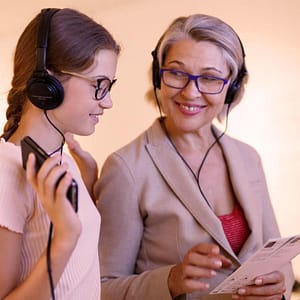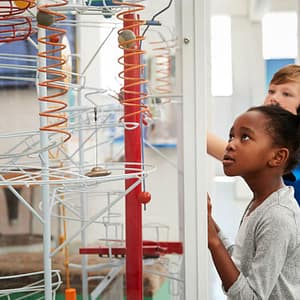How Museums Are Adapting Programming to Keep People Engaged During COVID-19
The cultural world has been one of the sectors hit the hardest by COVID-19. But as the pandemic rages on, many museums are still seeking out ways to serve the public and fulfill their missions: to enrich, inform, challenge, disseminate knowledge, and spark curiosity. While institutions navigate full or partial closures, museums are adapting with resilience, by reenvisioning traditional museum offerings and reinventing the way they interact with the public.
The Impact of COVID-19 on Museums
In March 2020, cultural institutions—museums, science centers, zoos, aquariums, botanical gardens— abruptly shut their doors. An October 2020 survey by the American Alliance of Museums illustrates the devastating effect this shutdown had for many institutions. At the time of the survey, one out of every three museums in the U.S. remained closed, including some that had never reopened since the initial shutdowns in the spring. Museums that had reopened were seeing, on average, 35% of normal attendance.1
Those that did reopen to the public were forced to significantly change the way they welcomed visitors. The on-site protocols include visitor count restrictions and timed-ticket entry, reduced hours, masks and social distancing guidelines, hand sanitizer stations, directional signage and floor stickers, and closed food courts and coat rooms.
Leveraging Digital Content to Engage and Inspire
Whether open or closed, institutions are faced with the question of how best to engage the public during this unprecedented time. Many have opted to increase their digital offerings. This includes everything from online exhibits to virtual tours, downloadable art kits, curator video chats, podcasts, and online teaching programs.
While the in-person experience cannot be replaced, digital programming opens up a world of new opportunities. Even though the flow of international visitors may have slowed dramatically, a digital audience can easily become a global audience. Many museums are recognizing this opportunity and translating their offerings to expand the reach of their programming. In this article, we share some of the inventive initiatives our clients have launched to keep people engaged in the age of coronavirus.
At-Home Activities to Drive Creativity and Learning
At a time when people everywhere are stuck at home, museums have given us a way to get creative.
The Institute of Contemporary Art, Boston launched Art Lab at Home, a series of online art projects based on works in their collection. Individuals seeking a creative outlet are invited to create a chalk Dance Spot on their neighborhood sidewalk, explore their home or community in search of items that inspire personal peace, or make a drum out of a milk jug and egg carton. The museum offers these creative resources in English and Spanish.
Crystal Bridges Museum of American Art’s Create Together program invites youth and adults to use the oil paintings in the museum’s collection as inspiration for collaborative artmaking activities. A series of art kits are available for pickup in the museum’s lobby, with versions offered in English and Spanish. The instructions in the kits are supplemented by online videos created by educators. Crystal Bridges only asks for a small donation, which is used to provide kits to families in need. The process is intended to spark online interaction—after creating their masterpieces, participants are invited to share their work on social media.
In 2019, The Walker Art Center created a series of at-home art kits based on the long-term exhibition Five Ways In: Themes from the Collection, translated into Spanish, Somali, and Hmong. During the pandemic, the creation of multilingual, at-home art packs continued, into the same languages, to help families affected by the pandemic. Each pack includes instructions for art activities along with the recommended materials: tempera paint, brushes, construction paper, pencils, and more. The museum collaborated with St. Paul Public Schools Nutrition Services to share the packs at meal distribution sites and worked with the Minneapolis Public Schools to develop a similar plan for their students.
Through its Creative Relief for Essential Families project, the Guggenheim Museum provided art-making materials and a workbook of artist-designed activities to 1,500 children of essential workers. Available in English and Spanish, the kits result from a collaboration between the Guggenheim and New Haven-based artists’ collective NXTHVN, a fellowship program established by artist Titus Kaphar. The museum coordinated contactless delivery to 37 Department of Education Regional Enrichment Centers, reaching families in all five NYC boroughs.
Los Angeles County Museum of Art (LACMA) is offering art-making activities though their Make Art @ Home YouTube series. In the videos, educators walk children through a series of projects, from flip-book art to collage making and stained glass. The videos are accessible to diverse audiences through closed captioning in Armenian, Persian, Simplified Chinese, Korean, Tagalog, Russian, and Japanese.
The Gilder Lehrman Institute of American History is producing an online version of their Hamilton Education Program, which aims to help students understand the influence of the Founding Era on today. Almost complete, the program asks participants to follow the model Lin-Manuel Miranda used in the creation of Hamilton to devise their own performance piece (e.g., a rap, poem, dramatic piece). English and Spanish programs guide users through the process of conducting research and creating their performance. Upon completion, students can submit their work for a chance to see Hamilton on Broadway.
Self-Guided Tours, Exploration, and Storytelling
Over 96% of Americans own a cell phone, which presents opportunities for museums to provide a personalized experience via mobile. Brooklyn Botanic Garden created a self-guided Treasured Trees Tour, available to anyone via the Garden’s website, allowing visitors to click on an interactive map and read descriptions about the trees they find as they tour the garden, or armchair garden via the web, in quarantine. The Tree Tour is available in six languages commonly spoken by borough residents: Arabic, Chinese, French, Russian, Spanish, and Yiddish.
For the Guggenheim’s 60th anniversary, the museum teamed up with the celebrated podcast 99% Invisible to examine unexpected facets of the museum’s architecture and history. The building’s story has been made available in two slightly different versions: as an onsite audio tour and as a podcast for remote exploration, in 11 languages.
The National Gallery of Art offers an online Scavenger Hunt introducing kids to architecture and horticulture in English and Spanish. Children are invited to explore their own neighborhoods, no matter where they live, with family or friends to find buildings and gardens that have elements in common with National Gallery architectural elements, flowers, and trees.
Conclusion
Museums are a long way from business as usual, but they still have stories to tell. Many are seizing the opportunity to use digital solutions as a means to educate, engage, and inspire. Even in difficult times, we are proud to see so many museums remain mindful of the need to make their initiatives available across languages. Current times have, if anything, amplified the need to make our history and culture equally accessible to all.
 Named to the 2023 Inc. 5000 list of fastest-growing companies and ranked among the world’s top 100 language service providers by CSA Research
Named to the 2023 Inc. 5000 list of fastest-growing companies and ranked among the world’s top 100 language service providers by CSA Research

